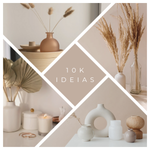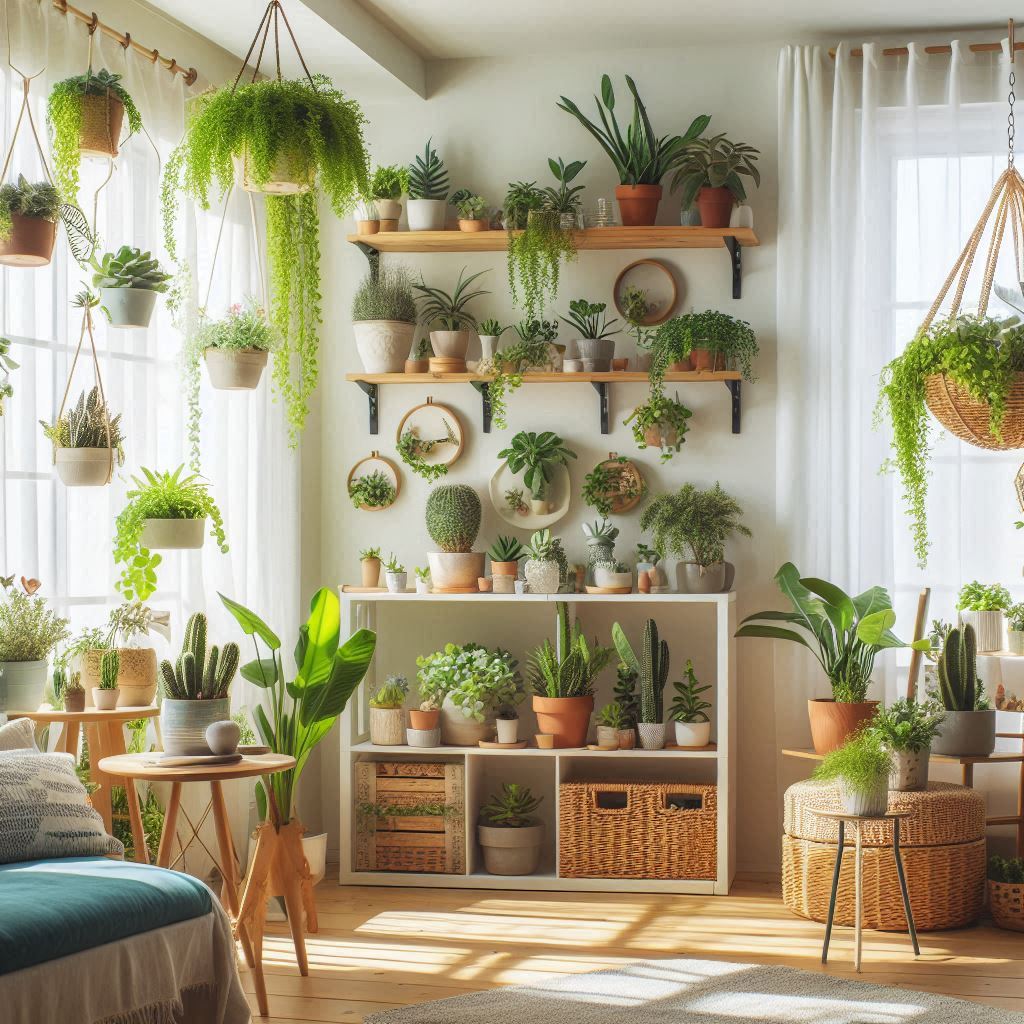Plants bring life, beauty, and serenity to any home—but in a small apartment, adding greenery without creating clutter requires strategy. The goal is to integrate plants in a way that enhances your space, not overwhelms it. When done right, indoor plants not only purify the air and boost your mood, they also become an essential element of your interior design.
In this guide, you’ll learn how to decorate with plants in a small apartment—balancing aesthetics, space, and care requirements. Whether you’re adding a touch of green to your home office or building a mini jungle on your windowsill, this article will help you do it without sacrificing function or flow.
Why Plants Are Perfect for Small Spaces
Plants have a unique ability to transform small homes. They soften hard edges, add organic movement, and bring warmth into even the most minimal interiors.
Benefits:
- Visually freshen up neutral or monochrome spaces
- Improve air quality and humidity
- Promote calm and reduce stress
- Create natural room dividers
- Add visual height, depth, or focal points without taking up much floor space
The key is choosing the right plants and placing them with intention.
Step 1: Evaluate Your Light and Layout
Before buying any plants, assess your apartment’s natural light. Light conditions determine which plants will thrive and where they should be placed.
Types of light:
- Bright, direct light (e.g., south-facing windows): succulents, cacti, fiddle-leaf fig
- Bright, indirect light (e.g., near east/west-facing windows): pothos, snake plant, peace lily
- Low light (e.g., corners, north-facing rooms): ZZ plant, cast iron plant, philodendron
Also consider how you move through the space. Avoid putting plants in walkways or where they’ll block access to furniture.
Step 2: Choose Low-Maintenance Plants
Unless you’re an experienced plant parent, go for varieties that tolerate a bit of neglect and adapt well to small containers.
Great options for beginners:
- Pothos: fast-growing, tolerant of low light, easy to propagate
- Snake plant: upright growth, survives with little water
- ZZ plant: low-light tolerant, stylish structure
- Spider plant: compact and good for hanging baskets
- Succulents: ideal for bright windowsills
- Peace lily: elegant and forgiving, even when you forget to water
These plants are not only beautiful but also resilient in apartment environments.
Step 3: Go Vertical
In small homes, floor space is precious. Use vertical surfaces to display plants without crowding furniture or walkways.
Vertical ideas:
- Floating shelves with trailing plants like pothos or ivy
- Wall-mounted planters in geometric arrangements
- Hanging baskets from the ceiling or curtain rods
- Tall plant stands that elevate plants off the floor
- Over-the-desk shelving that doubles as office decor
Greenery that climbs or cascades naturally draws the eye upward, making the room feel taller.
Step 4: Use Plants as Decor and Zoning Tools
Plants can act as soft, natural dividers between zones in a studio or open-plan layout.
Examples:
- A tall fiddle-leaf fig between your bed and home office
- A row of potted bamboo or palms by the window to separate lounge from dining
- A tabletop bonsai or succulent arrangement to define your home office desk
This approach is perfect for maintaining openness while creating subtle boundaries.
Step 5: Keep It Cohesive
To avoid visual clutter, group plants by tone, texture, and planter style. A cohesive look makes the arrangement feel intentional—not chaotic.
Tips:
- Choose 1–2 main types of planters (e.g., white ceramic, terracotta)
- Repeat certain plants in different parts of the apartment
- Combine various heights and shapes for dimension
- Use trays to organize mini plants or succulents
A group of three matching planters looks cleaner than five different colors and materials scattered randomly.
Step 6: Use Functional Plant Decor
Some plant displays can serve dual purposes, especially in small spaces.
Ideas:
- A bar cart turned into a mobile indoor garden
- Window ledges for herbs or small potted plants
- Bookshelves with alternating books and greenery
- A ladder shelf that holds both storage baskets and potted plants
- A wall-mounted spice rack repurposed for tiny succulents
Functional decor helps integrate plants naturally into your existing furniture.
Step 7: Add Greenery to Unexpected Places
If you think you’ve run out of space, think again. There are creative spots where a touch of green can work wonders.
Try:
- Bathroom shelves (peace lily or pothos love humidity)
- Top of the fridge (low-light plants like pothos or ZZ)
- Desk corners (a mini cactus or air plant)
- Inside open cabinets or bookcases
- On windowsills, especially in kitchens
Just make sure plants placed near electronics or cooking areas are easy to move for cleaning.
Step 8: Match Plant Size to Room Scale
Avoid placing a large floor plant in a tiny room with limited natural light—it will dominate the space and possibly fail to thrive.
Scale tips:
- Small pots (2–4 inches): windowsills, desks, shelves
- Medium pots (6–8 inches): side tables, dressers, bathroom counters
- Large plants (10–14 inches or more): corners of open rooms or near large windows
Plants should complement, not overwhelm, your room’s layout.
Step 9: Be Honest About Maintenance
Each plant you bring home adds to your care routine. Start with a few, learn their rhythms, then expand slowly.
Care reminders:
- Set phone alerts for watering
- Rotate pots monthly to avoid uneven growth
- Clean leaves occasionally to remove dust
- Learn your plant’s seasonal needs (more/less water or sun)
Healthy plants look better, grow faster, and enhance your space more effectively than stressed, unhappy ones.
Step 10: Blend Natural and Artificial Greenery (if needed)
If your apartment has very little natural light or you travel often, mix in high-quality artificial plants.
Use faux greenery:
- In dark corners
- High on shelves (where real plants are hard to reach)
- In low-maintenance spots like entryways
Modern faux plants can look incredibly realistic—especially when mixed with live ones. Just dust them occasionally to keep the illusion.
Final Thoughts: Green Without the Clutter
Decorating with plants in a small apartment is not about quantity—it’s about placement, variety, and intentional design. A few well-chosen plants can transform your home into a relaxing, stylish retreat, even if you’re working from your living room or studio.
By using vertical space, choosing the right species, and curating your plant styling, you can enjoy all the benefits of greenery—without turning your space into a jungle. Whether you’re a plant lover or a total beginner, the key is balance.
Let your space breathe. Let your plants thrive. And most importantly, let your home feel alive.

